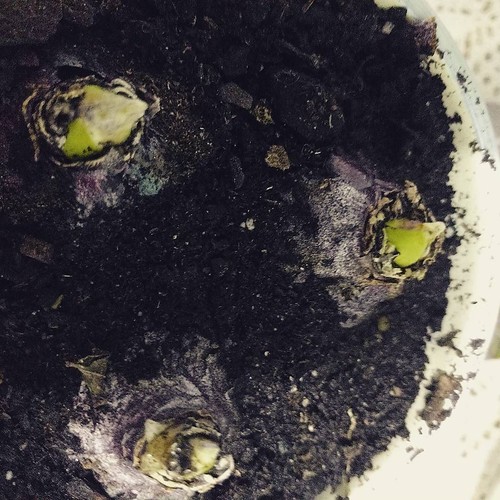All samples had been recognized on the foundation that RNA integrity for each sample was .8.. Microarray slides were geared up in the laboratory of Dr. Tim Gant (MRC Toxicology Unit, Leicester) employing the microRNA sequences from the miRBase v16. databases. Array slides had been printed with probes, supplied by Exiqon (Denmark), complimentary to all mouse and rat microRNAs, like associated viruses and controls. FlashTag 3DNA array detection kits (Genisphere, PA, Usa) ended up used to label 1 mg of total RNA from control and ischemic samples (three for every group for in vivo and in vitro samples). Arrays have been scanned employing an Axon4200 scanner and information was compiled making use of GenePix Pro six. (Molecular Devices, CA, United states). The microarray datasets can be viewed at Gene Expression Omnibus.Data is introduced as a imply 6 SEM, except if or else said. Statistical importance was examined employing an unpaired t-test (Graphpad Prism, Grapdhpad Software, United states). Statistical importance was recognized at p,.05. denotes p,.05, denotes p,.01 and denotes p,.001.Our research aimed to emphasis on the apoptotic element of ischemia-induced neuronal harm. Prior scientific studies have described that OGD is able to induce equally necrosis and apoptosis [52,53]. Necrotic cell loss of life happens due to the too much release of glutamate, which binds to NMDA-receptors major to an excitatory response. For that reason, to minimise the degree of necrotic cell loss of life within these cultures, neurons have been pre-handled with  NMDA-receptor antagonists APV and (+)MK-801 [546]. Ahead of continuing, we assessed the degree of cell demise in our main cortical neurons in regular lifestyle situations to be 2462% – a degree of basal loss of life that is frequently noticed in 1011 DIV main neuronal cultures [570]. To build the appropriate length of an OGD insult required to induce neuronal cell death, cortical neurons were uncovered to manage EBSS that contains oxygen and glucose (EBSS+Oxygen+Glucose) or EBSS depleted of oxygen and glucose (OGD) for 2, four or six h.Overall RNA, such as microRNAs, was isolated from principal neuronal mobile cultures employing miRNeasy Mini Kits (Qiagen). Reverse transcription was performed using the Taqman miRNA Reverse transcription kit (Used Biosystems). Equivalent amounts of RNA (100 ng) were reverse transcribed, employing 100 mM dNTPs, 50 U reverse transcriptase, .four U RNase Inhibitor, and specific miRNA reverse transcriptase primers, with the 1211443-80-9 following protocol: 16uC for thirty min, 42uC for 30 min, adopted by 85uC for five min. PCR was then carried out on the reverse transcription (RT) items utilizing the Taqman miRNA assay kit (Utilized Biosystems). Each PCR contained 1.33 mL of the RT item, ten mL of Taqman 2x Common PCR Learn Combine, 1 mL 20x Taqman terminate the OGD, the cells had been placed in their standard servicing medium for 24 h, at which level mobile demise examination was executed using Sytox/Hoechst.11454656 EBSS that contains oxygen and glucose substantially elevated cell demise levels following a six h exposure, when in comparison to regular tradition problems (Figure 1A). The final results indicated 2763% (n = three), 6268% (p = .02, n = five) and 8563% (p,.0001, n = five) loss of life in cultures uncovered to 2, 4, and six h of OGD, respectively (Figure 1A).
NMDA-receptor antagonists APV and (+)MK-801 [546]. Ahead of continuing, we assessed the degree of cell demise in our main cortical neurons in regular lifestyle situations to be 2462% – a degree of basal loss of life that is frequently noticed in 1011 DIV main neuronal cultures [570]. To build the appropriate length of an OGD insult required to induce neuronal cell death, cortical neurons were uncovered to manage EBSS that contains oxygen and glucose (EBSS+Oxygen+Glucose) or EBSS depleted of oxygen and glucose (OGD) for 2, four or six h.Overall RNA, such as microRNAs, was isolated from principal neuronal mobile cultures employing miRNeasy Mini Kits (Qiagen). Reverse transcription was performed using the Taqman miRNA Reverse transcription kit (Used Biosystems). Equivalent amounts of RNA (100 ng) were reverse transcribed, employing 100 mM dNTPs, 50 U reverse transcriptase, .four U RNase Inhibitor, and specific miRNA reverse transcriptase primers, with the 1211443-80-9 following protocol: 16uC for thirty min, 42uC for 30 min, adopted by 85uC for five min. PCR was then carried out on the reverse transcription (RT) items utilizing the Taqman miRNA assay kit (Utilized Biosystems). Each PCR contained 1.33 mL of the RT item, ten mL of Taqman 2x Common PCR Learn Combine, 1 mL 20x Taqman terminate the OGD, the cells had been placed in their standard servicing medium for 24 h, at which level mobile demise examination was executed using Sytox/Hoechst.11454656 EBSS that contains oxygen and glucose substantially elevated cell demise levels following a six h exposure, when in comparison to regular tradition problems (Figure 1A). The final results indicated 2763% (n = three), 6268% (p = .02, n = five) and 8563% (p,.0001, n = five) loss of life in cultures uncovered to 2, 4, and six h of OGD, respectively (Figure 1A).
HIV gp120-CD4 gp120-cd4.com
Just another WordPress site
